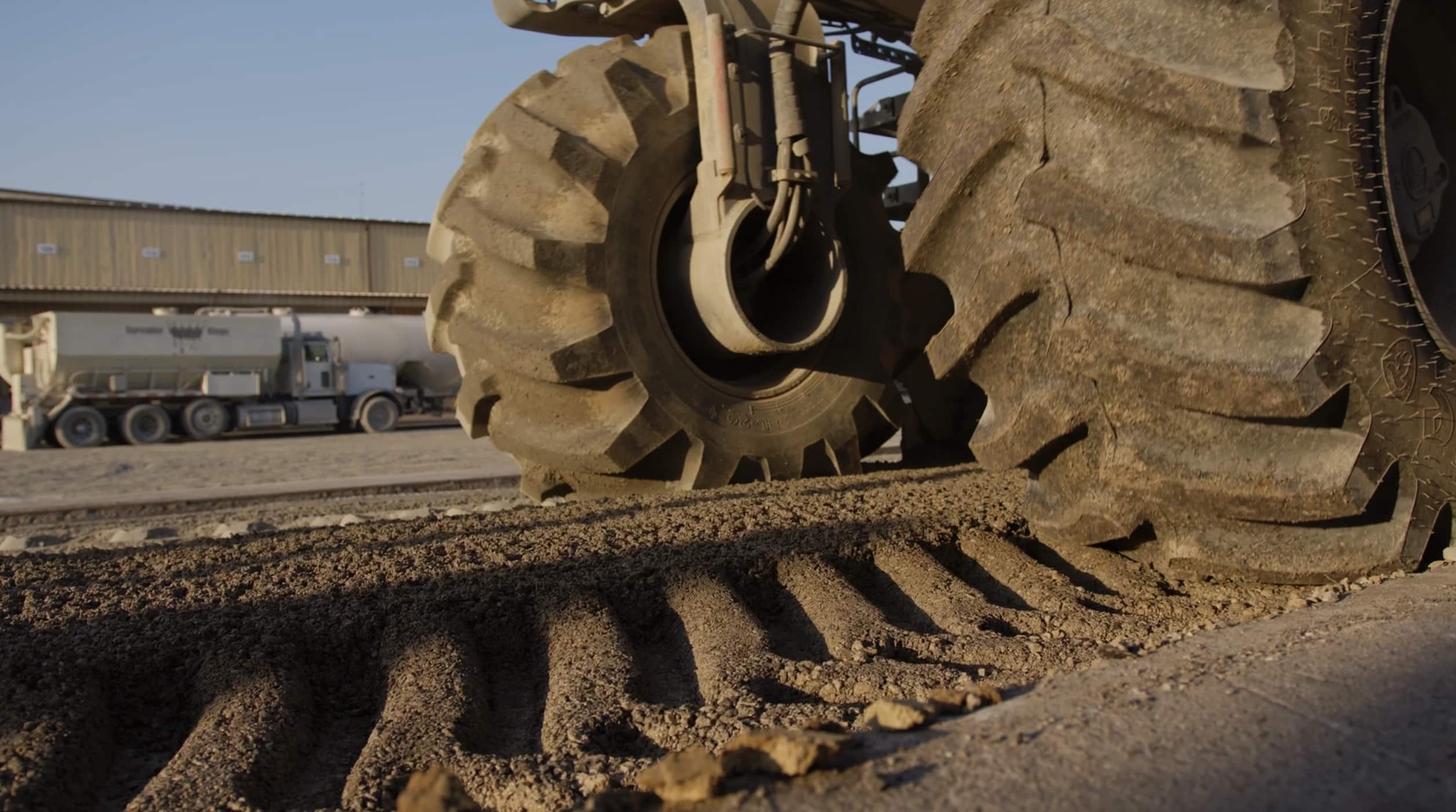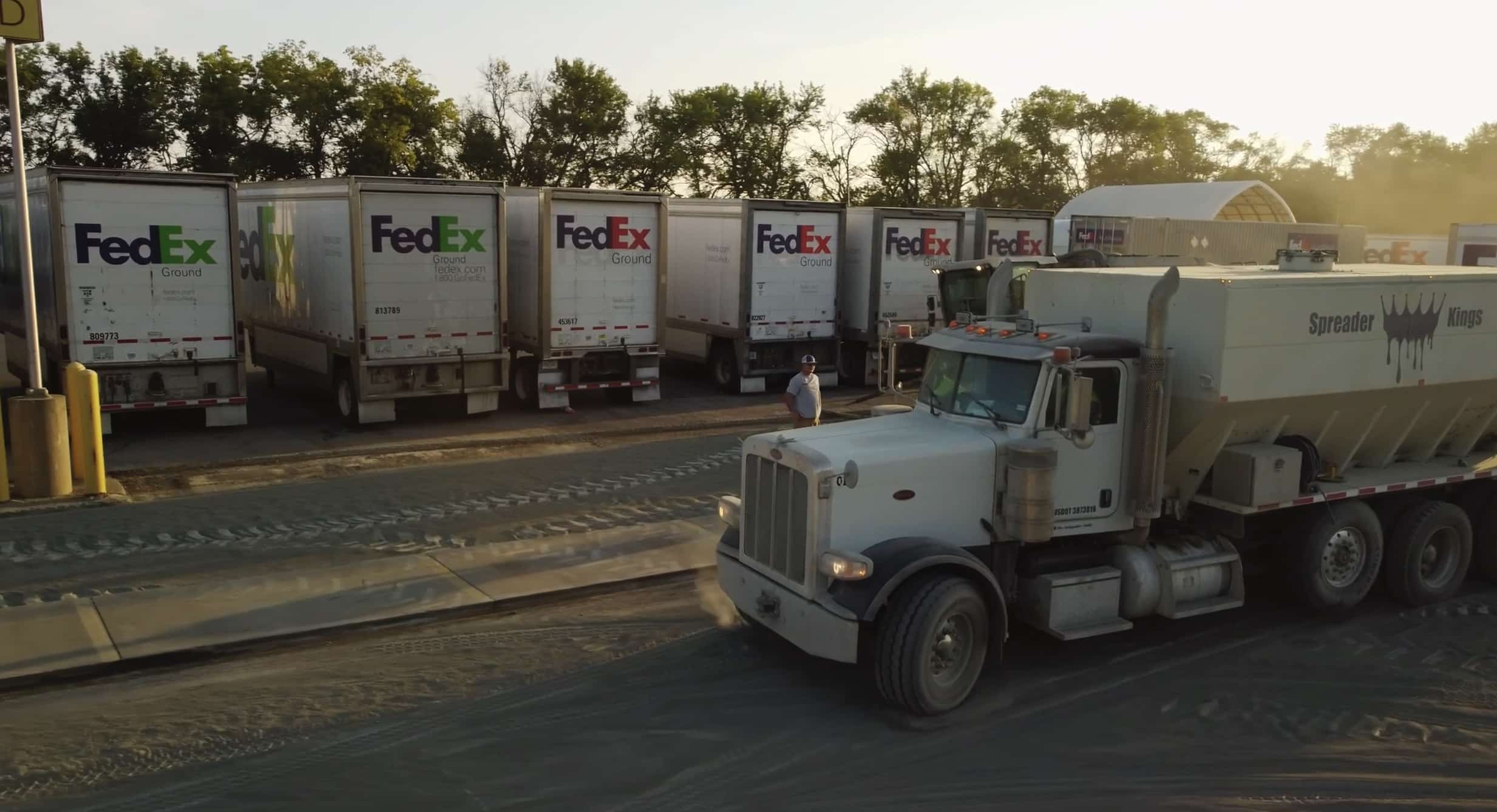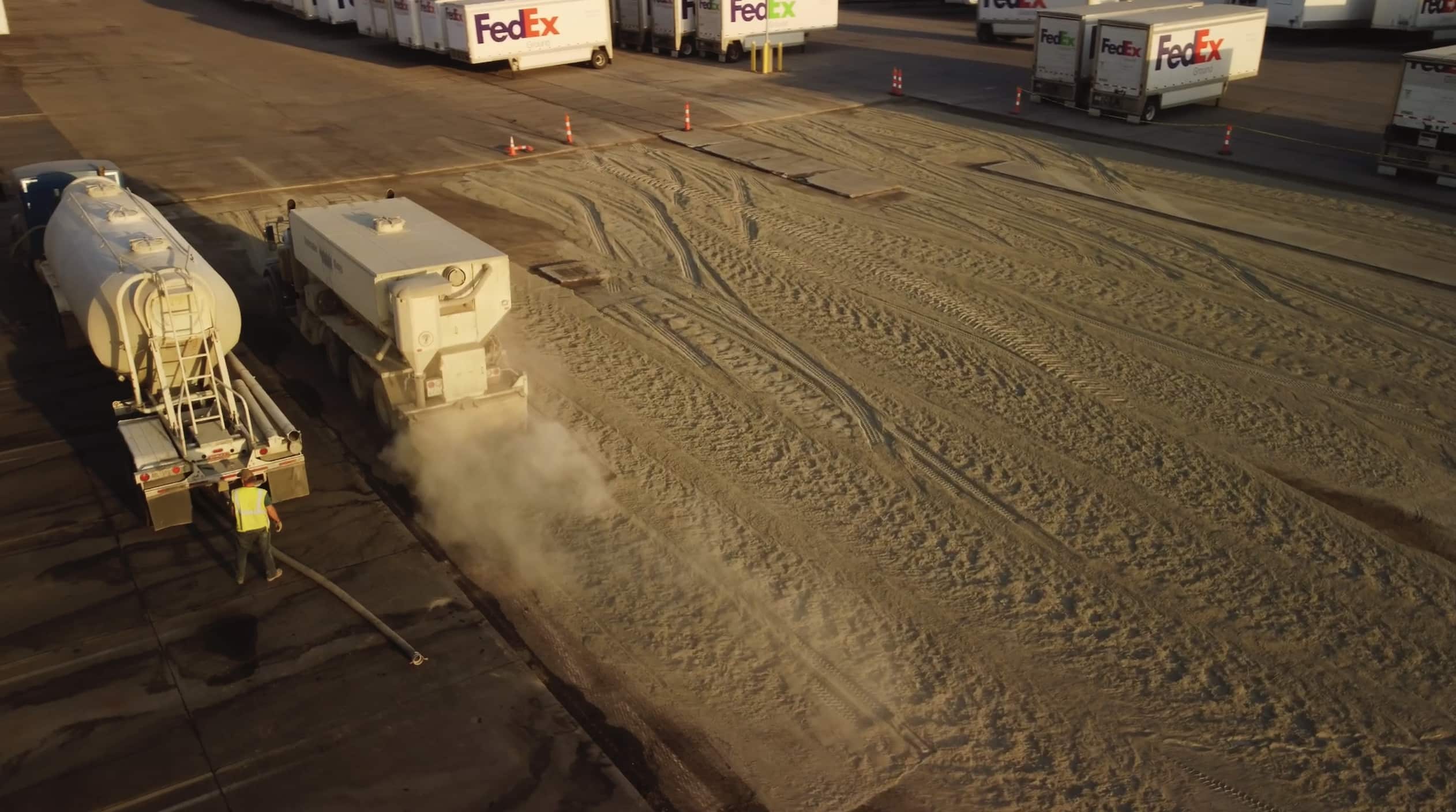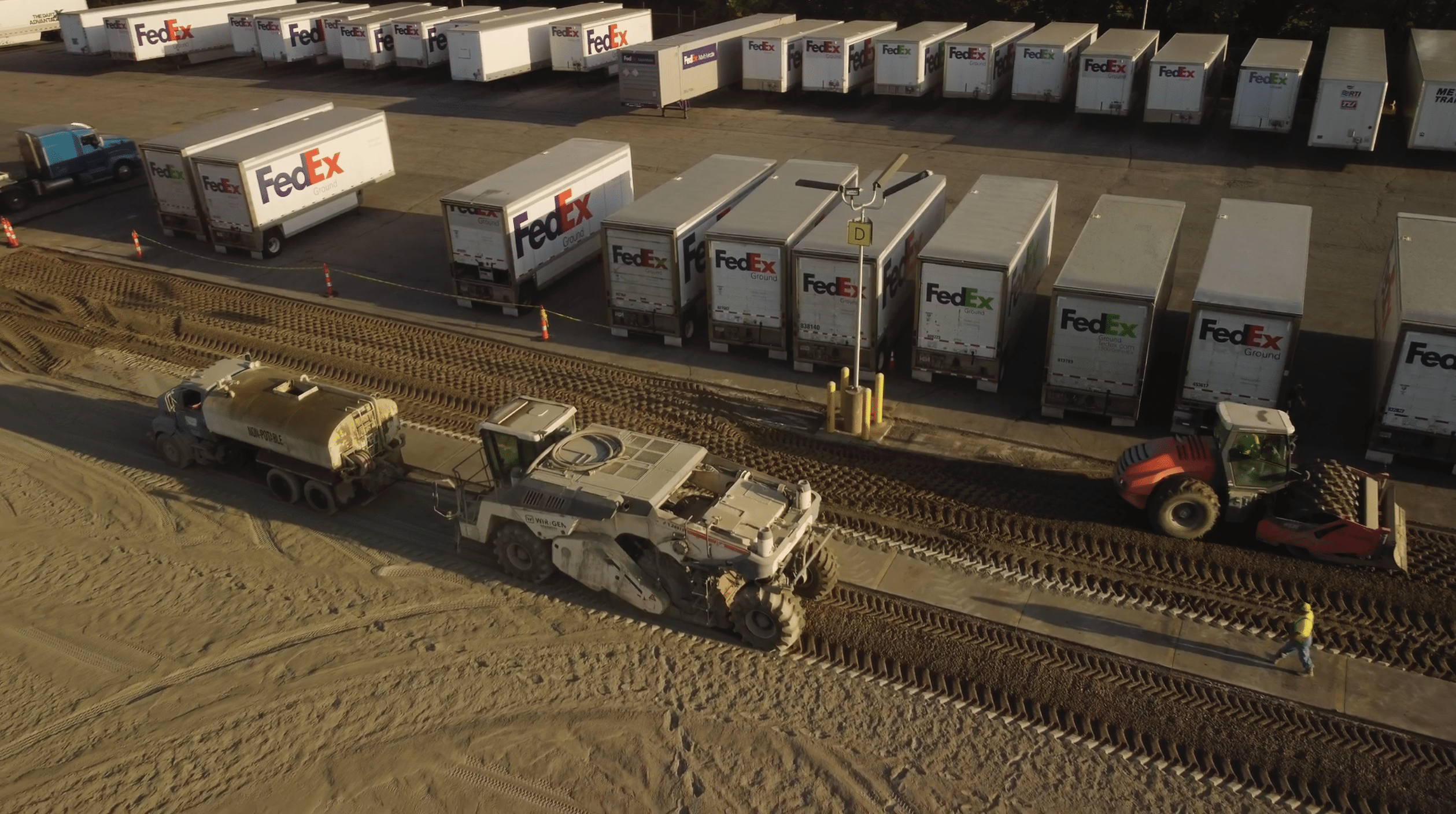Stabilization Benefits
Stabilization can improve existing soils, eliminating the need for expensive remove-and-replace operations. Often, soils that provide the structural base for roads, building pads or parking lots are chemically treated to control the engineering properties of a soil, such as moisture content.
Project Highlights
FEDEX, 2023
- Our project working with FedEx to rebuild their parking lots involved stabilization of the subsurface prior to laying the new asphalt.
How Cement Stabilization Works
Cement is a widely used composite material composed mainly of calcium, silica, alumina and iron derived from limestone, sand and clay. All are processed, fired in a kiln and pulverized to a fine powder. When cement is exposed to water and mixed into the soil with a large tiller, it chemically hydrates, resulting in a gel that forms an interlocking matrix around soil particles. The mix hardens, or cures, very rapidly, typically within one to three hours, so the soil-cement mixture must be placed, mixed and compacted quickly.





